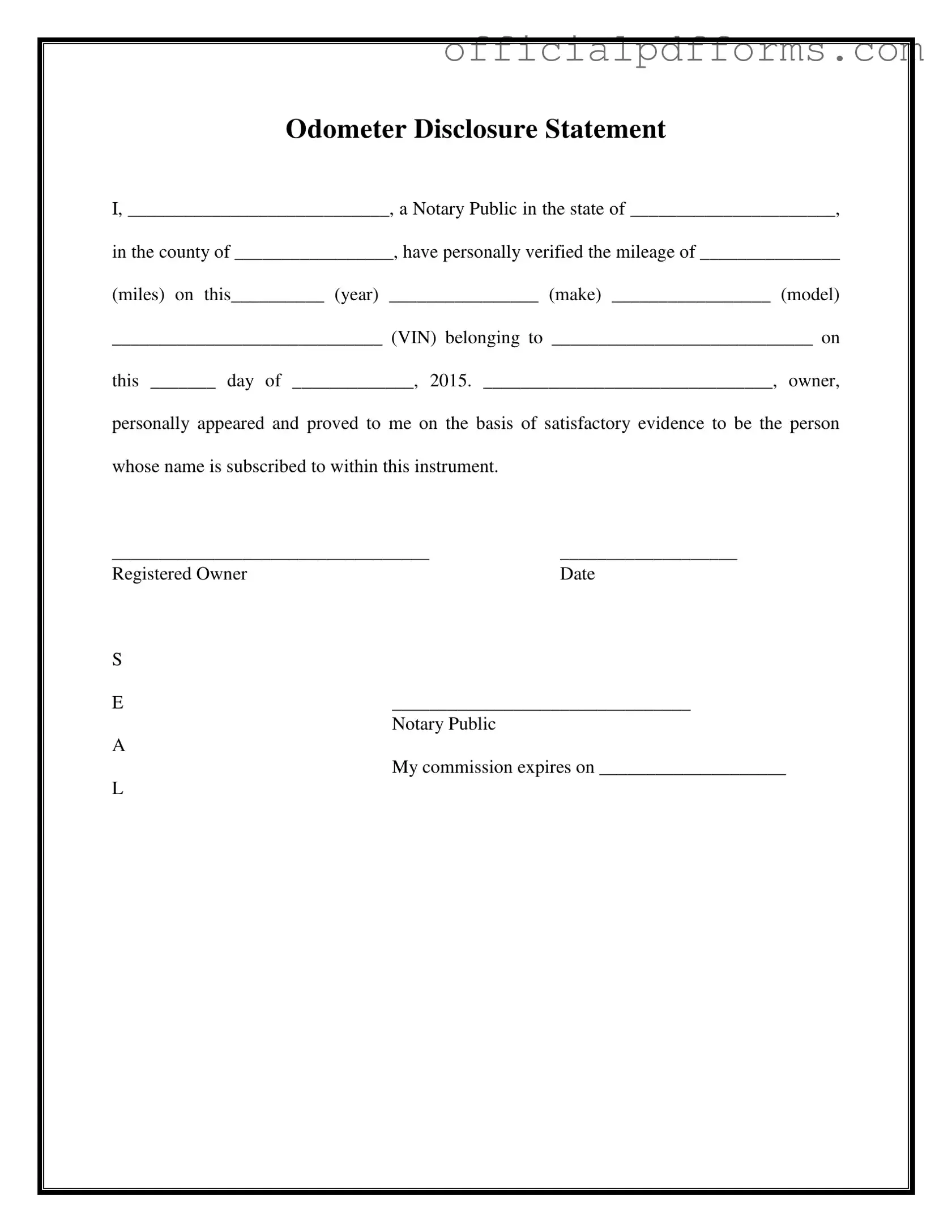Fill in a Valid Notarized Odometer Statement Form
The Notarized Odometer Statement is a formal document that verifies the mileage of a vehicle at the time of sale or transfer. This statement, completed by a notary public, serves to protect both the buyer and seller by providing a reliable record of the vehicle's mileage. To ensure a smooth transaction, consider filling out the Notarized Odometer Statement form by clicking the button below.
Access Form Online
